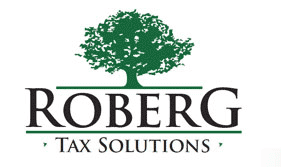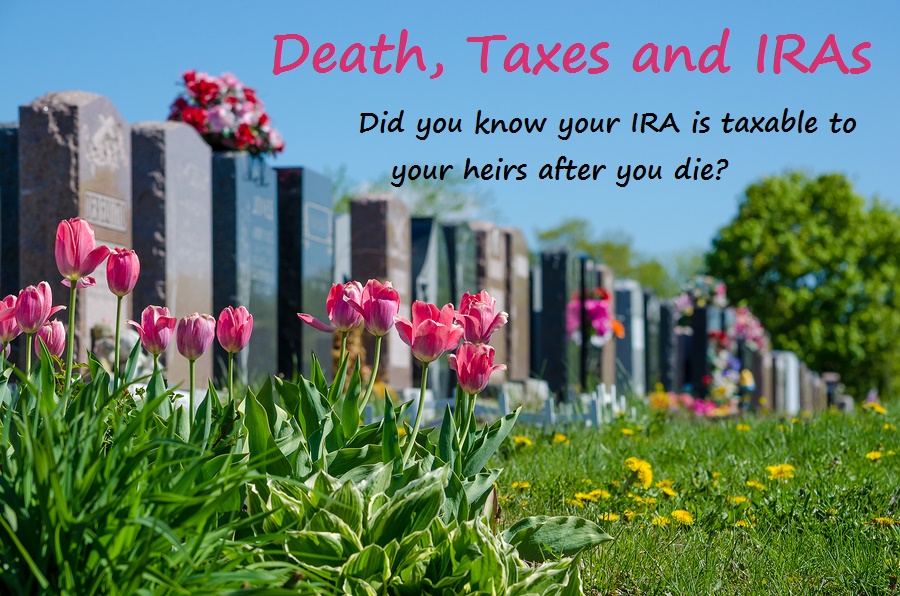
Okay first and foremost, you’re not a dummy! But I wanted to make a simple post with simple explanations about IRAs. This isn’t the be all end all of IRA stuff. But hopefully it will give you a little clue about them.
A traditional IRA lets you put money away for retirement and you can get a tax deduction for the money that you put into the IRA. For example: if you’re in the 25% tax bracket and you put $1,000 into an IRA then you will save $250 in taxes for the year you put the money in. (The tricky part is that there are limits as to how much is deductible if you or your spouse have a retirement plan at work. There are also complications if you’re using the married filing separately status. I’m not covering that here. If this sounds like you, give me a call and I can help you figure it out.)
A Roth IRA lets you put money away for retirement but you don’t get a tax deduction for the money you put in. $1,000 into a Roth IRA gives you no tax savings. (There are income limits for contributing to a Roth, the phase out starts at $167,000. If you’re under that income level, you’re fine.)
Generally, the most you can contribute to an IRA in a year is $5,500. If you’re married, you can contribute $5,500 for you and $5,500 for your spouse, even if your spouse doesn’t work. You can’t put more money into an IRA than you earned (so if you only made $3,000 that’s going to be your maximum contribution.) If you’re over 50 years old, you can contribute up to $6,500 to your IRA.
Remember, the $5,500 is a maximum. It’s fine to contribute less. Most accounts are going to want at least a $1,000 to open, but you don’t have to have $5,500 to put into an IRA. Its not an all or nothing kind of investment.
When you take money out of your traditional IRA, the money you take out is taxable. So, once again if you’re in the 25% tax bracket and you take $1,000 out of your IRA then you’ll pay $250 in taxes. The concept is kind of like: take a tax deduction now/pay taxes later. Here’s where it’s tricky…if you take the $1,000 out before you are 59 1/2, not only will you pay the $250 in taxes, but you’ll also pay a 10% penalty making the total tax you pay $350. There are exceptions to the penalty if you use the money to buy a house or pay tuition. You will pay the tax no matter what, but sometimes you can escape the penalty.
With the traditional IRA you are playing a gambling game. You’re betting that your taxes are higher now and will be lower when you retire. That’s a good bet for many people. So the traditional IRA is a good thing.
When you take money out of your Roth IRA, the money you take out is not taxable. So, if you take out $1,000 from your Roth and you’re in the 25% tax bracket, you will pay zero tax on that $1,000. If you take the $1,000 out before you turn 59 1/2, you may pay a 10% penalty on the earnings but not on the whole $1000. Roth IRA means tax-free income later.
I really like the Roth IRA for a couple of reasons:
- It’s especially good for young people. The Roth is a great savings tool that can be used for buying a home and paying college tuition. If you invest in a Roth when you’re in the 15% tax bracket but wind up taking the money out when you’re in the 25% tax bracket: zowie! You win! It’s like a little tax bonus.
- Even if you’re more mature and already in the 25% tax bracket or higher, I still like the Roth. When you’re retired and receiving social security payments, your social security isn’t taxable until you cross a certain income threshhold. Once you cross that line, your social security becomes taxable and it’s like you’re paying double taxes. For example: let’s say your pension and social security put you right at the line where if you make any more money your social security would be taxable. Once you cross that line you’ll pay tax on your social security income. If you take money out of your traditional IRA, let’s use the $1,000 example again, and you’re in the 15% tax bracket, you won’t pay 15%–you’ll pay even more because now your social security will be taxed too. It’s not exactly double, it’s more like one and a half times more. (Kind of a funky equation.) Bottom line: once you start receiving social security payments, extra income is actually taxed at an even higher rate than your real tax rate because they start taxing your social security. Ouch! Ask any senior citizen who’s been hit with this. It hurts.
- Now if your retirement income is so far over the threshold that you don’t need to worry about additional tax (because you’ve maxed out your taxable social security), or if it’s nowhere near the threshold, then it’s not really an issue for you. But for many seniors, extra taxable income can be a big problem for them. The Roth IRA can be a real lifesaver when you’re older.
If it’s not completely obvious yet, I’m a big Roth fan. That said, if you need a tax deduction now, then traditional IRA is the way to go. For example: one year, I needed to lower my personal income by $310 to claim a $2000 tax credit. That’s a no brainer, of course I spent $310 on a traditional IRA to save $2,000. I put the rest of my retirement money into a Roth. You can do stuff like that when and if you need to.
There’s so much to know about IRAs and it can be really confusing. This little post is just the tip of the iceberg. For detailed information about IRAs, the IRS has a book called Publication 590. Here’s a link to it: Pub 590
Okay, I confess, that publication looks a little intimidating. It’s 110 pages long. But if you look at page one, the chapters and sections are set up based upon the questions people ask. Look for your question and it will tell you the right page to find your answer. It’s not so scary when you know that in advance.







